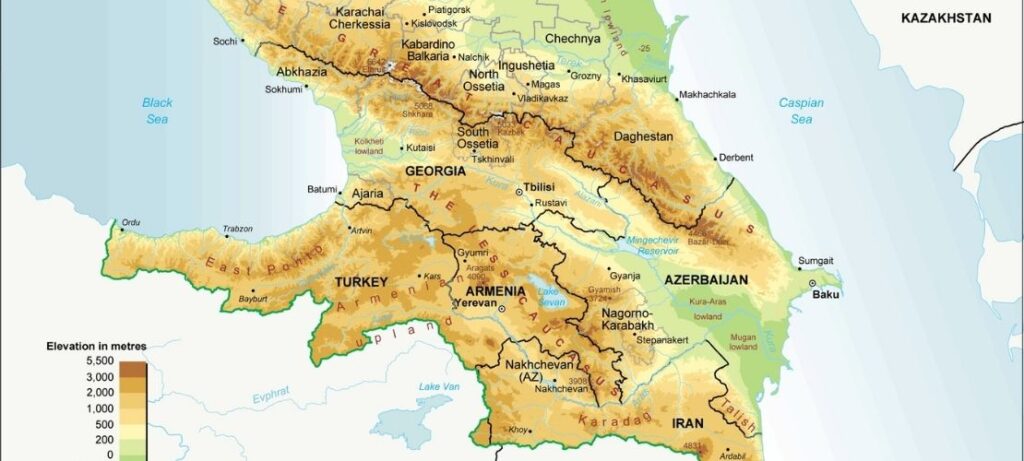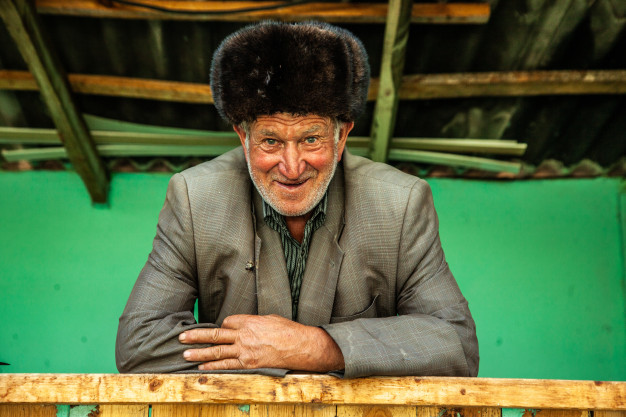
Between Europe and Asia
As for the morphology of the territory in the North Caucasus there are the major mountains, among which the Great Caucasus mountain range stands out, identified as the natural dividing line between Europe and Asia, which among its peaks can include the Monte Elbrus (5.642 m), the highest mountain in Europe, unlike the southern area characterized by a mountain landscape with lower peaks and the Azerbaijani plain.
The climate varies according to altitude and latitude and temperatures are generally lower and decrease at higher altitudes: the Greater Caucasus forms a barrier between the temperatures of the mid-latitudes and the subtropics and thus prevents the movement of cold air masses that from the south they can reach Ciscaucasia.
Caucasia Ecological Landscapes
The Caucasus has different ecological landscapes that include semi-desert areas, marshy territories, steppes, forests (covering about 20% of the region), territories with low vegetation, and is characterized by a remarkable biological diversity.
Understanding the nature of the territory and the relationship it has with the local population, the way in which it has directly influenced lifestyles and traditions, is important if you think that there are still areas that are difficult due to the harshness of the mountains if not almost impossible to be reached (especially in the North Caucasus in general and in Dagestan in particular) and therefore little inclined to be controlled by local and Russian authorities.
Natural Resources

The area is rich in natural resources both mineral (gold, chromium, copper, iron, mercury, manganese, alunite, tungsten, uranium, zinc, lead, molybdenum) and energy (oil, natural gas, coal) capable of attracting interest and investments of international companies and foreign countries motivated by a policy of the Caucasian states based precisely on the promotion of their own resources. Resources that also represent a reason for local and national contention to which we can add the problems of an ethnic and religious nature that allow us to define the Caucasian region as one of the world areas most affected by conflicts and internal violence.
The exemplary cases are the controversy that arose between the Republic of Chechnya and the Russian Federation animated both by ethnic-religious reasons between the illegal militant forces and the security forces of the Russian Federation and by the oil dispute that often saw Grozny oppose in Moscow on who should directly benefit from its extraction and its sale to leading companies in the energy sector. This conflict highlighted Russia’s willingness to continue to exert its influence on the region and especially on the political and economic life of the North Caucasus with important implications for the southern area as well.
A further example is the conflict that broke out in the early 90s between Armenia and Azerbaijan, confined states, which arose mainly from motivations of a territorial nature as regards the sovereignty of Nagorno-Karabakh even if these reasons, according to experts, they conceal the will of the two states to have direct access to the water resources of the disputed territory; a conflict that currently continues to exert its influence on the international relations of the two countries, on their internal politics and on the development of the economy.
Ethnic and religious motivations are the basis of many conflicts and clashes affecting the Caucasian region characterized by about 50 different ethnic groups that can be divided on a linguistic basis.
Ethnicities who speak Caucasian Languages.
Caucasian languages have a great linguistic variety and are spoken by about 11.2 million people and can be grouped into three sub-categories:
- The Kartvelian language family (approximately 5.2 million speakers) which includes Georgian, Mingrelian, Laz and Svan languages
- The Northwest Caucasian language family, also called Abkhaz-Adighe, Circassian or Pontica (about 2.5 million speakers) also includes the Kabardina language
- The north-eastern language family, also called Dagestanian, Nakho-Dagestanian or Caspian (about 3.5 million speakers), including the Chechen, Avara, Ingush and Lezgi languages.
Ethnicities speaking Turkish languages, among which Azerbaijani stands out with its 8.7 million speakers. To this ethnic group we can add the Balkari, Karachay, Kumyk, Nogai and Turkmen for a total of about 29 million speakers
Mongolian ethnicity represented by the Kalmyk inhabitants of the current Republic of Kalmykia, descendants of the Oirati, a western Mongolian group.
Indo-European ethnic groups which can be divided into:
- Iranian group represented by Kurds, Ossetians, Talish and Tat
- Armenian group, represented by the 3.2 million inhabitants of Armenia to which we can add the 8 million Armenians who emigrated during the diaspora who reside in Nagorno-Karabakh, Georgia and in the Russian North Caucasus
- Slavic group that includes in addition to the Russians the Kuban Cossacks and the Terek Cossacks
- Hellenic group formed by the Greeks who traditionally lived in Pontus who spoke a Greek dialect that differed from the standard Greek language
Ethnicity speaking minority languages divided into Assyrians (about 35 thousand) who live in Georgia, Armenia, Azerbaijan and southern Russia and Mountain Jews, also called Juvuro or Juhuro, who live mainly in Dagestan and Azerbaijan.